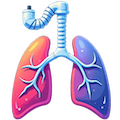LITERATURE/LINKS
TYPES OF LINES
Central Venous Catheter (CVC)
- usually triple lumen, routine central catheter for the ICU
- administration of caustic infusions
- preventing complications is important, consideration of short-term pressors (at <0.2mcg/kg/min) via PIV is reasonable
- measurement of CVP
Dialysis Catheter (sometimes called the trade name of Quinton)
- dialysis or plasmapheresis catheter, can have a central port for central access
- Can also be tunneled (by surgery or IR) for semi-permanent placement (often then called a Permacath)
Introducer Sheath (large-bore, common trade name Cordis)
- used for rapid resuscitation such as hemorrhage, or to “introduce” other equipment such as a PA-catheter or Transvenous Pacer
Hickman (tunneled catheter in subclavian)
- for continuous infusions in the home setting (like epoprostenol)
Portacath (completely under skin)
- for chemotherapy or patients requiring recurrent access (like sickle cell)
Peripherally Introduced Central Cathether (PICC)
- CVC introduced through deep vein on upper arm (eg brachial) ends at SVC
- This insertion site can be kept longer than a traditional PIV and is great for patients who will require long-term infusions like antibiotics (you can administer pressors through a PICC)
- Of note a “midline” enters in the same spot but is shorter and ends around the axillary vein
Arterial Line
- Continuous monitoring of blood pressure
- Reliable titration of pressors, inotropes, and antihypertensive infusions
- Frequent arterial blood sampling
SUPPLIES
line kit, chlorhexidine, lidocaine, face mask, cap, sterile gown, sterile gloves, 3+of saline flushes (remember the saline is sterile, but sometimes the syringe is not, not needed for arterial line), sterile caps, biopatch (blue to the sky), sterile probe cover, ultrasound
COMPLICATIONS
- Pneumothorax/hemopneumothorax
- Arterial puncture
- Air embolism
- Infection
- Arrhythmia
- Thrombosis
- Compromise of circulation distal to arterial line (Example: Raynaud’s, thromboangiitis obliterans)
TECHNIQUE
CVC/HD Lines: Hand-dominant IJ preferred (US-guided, compressible site, pt can walk with this site, best flow for HD)
- CONSENT AND TIME-OUT
- Trendelenberg if possible
- Ultrasound to identify anatomy and insertion site, vein is compressible and artery is pulsatile and non-compressible
- Prep skin with chlorhexidine
- Put gel on probe
- Open kit and sterilely add equipment not in kit (flushes, biopatch, caps, etc)
- Don cap, mask, sterile gown, gloves
- Place sterile drape
- Place sterile probe cover over ultrasound probe, secure with rubber bands, and place sterile gel outside
- Re-clean site with chlorhexidine
- Re-Identify insertion site with ultrasound
- Anesthetize insertion site with lidocaine (prep kit AFTER anesthetizing to allow lidocaine time to work)
- Flush your catheter with saline to know it’s patent and working, cap/clip to ensure no air enters catheter after flushing
- Slide wire of guidewire back until curved wire tip is straight
- Re-Identify site with ultrasound and align vein in middle of ultrasound screen
- Insert syringe needle into vein under ultrasound guidance while maintaining negative pressure on syringe. Do not push down with ultrasound or you will compress the vein. You will see blood aspirate freely when you are in the lumen
- Hold the needle hub (stabilize it) with your non-dominant hand while unscrewing the syringe – carefully!
- Watch for non-pulsatile blood flow and insert your guidewire (if meeting resistance, remove guidewire and confirm that blood flow is still present)
- Remove needle once guidewire inserted and make small incision with scalpel (bevel-up) to facilitate insertion of dilator. NEVER LET GO OF GUIDEWIRE
- Thread dilator over guidewire, holding it proximally and using gentle twisting motion. NEVER LET GO OF GUIDEWIRE
- Remove dilator and then thread your triple lumen catheter until the wire emerges from a distal port/lumen. NEVER LET GO OF GUIDEWIRE
- Grab the wire when it emerges and advance catheter into vessel – then remove the wire – do not advance catheter unless you have control of guidewire from brown port!
- Flush ports either with caps or with clips. However you choose, always hold syringe upright so bubbles in syringe do not go in. Always undo clip and reclip with syringe still attached so as not to introduce air.
- Suture catheter in place and place Biopatch, dress catheter site with Tegaderm
Arterial Line: Radial artery is preferred site
- CONSENT AND TIME-OUT
- Perform Allen’s Test prior to arterial line placement to ensure collateral circulation for hand
- Make sure pressure tubing with transducer is connected to bedside monitor (can ask nursing for help with this)
- Position arm straight, palm up – can use armboard to ensure arm is straight and wrist is dorsiflexed
- Prep skin with chlorhexidine
- Open kit and sterilely add equipment not in kit
- Don cap, mask, sterile gown, gloves
- Place sterile drape
- Re-clean site with chlorhexidine
- Apply local anesthetic (can make a wheel with lidocaine)
- Gently palpate wrist for radial artery pulse
- Pull skin taut over the artery to stabilize it
- Puncture skin at about 45 degrees for radial artery
- Advance needle and catheter until flash of blood seen, then advance catheter only, into artery
- Connect to the pressure tubing that you set up earlier and observe the monitor for arterial waveform
- Secure the line with suture, biopatch, tape, and Tegaderm
